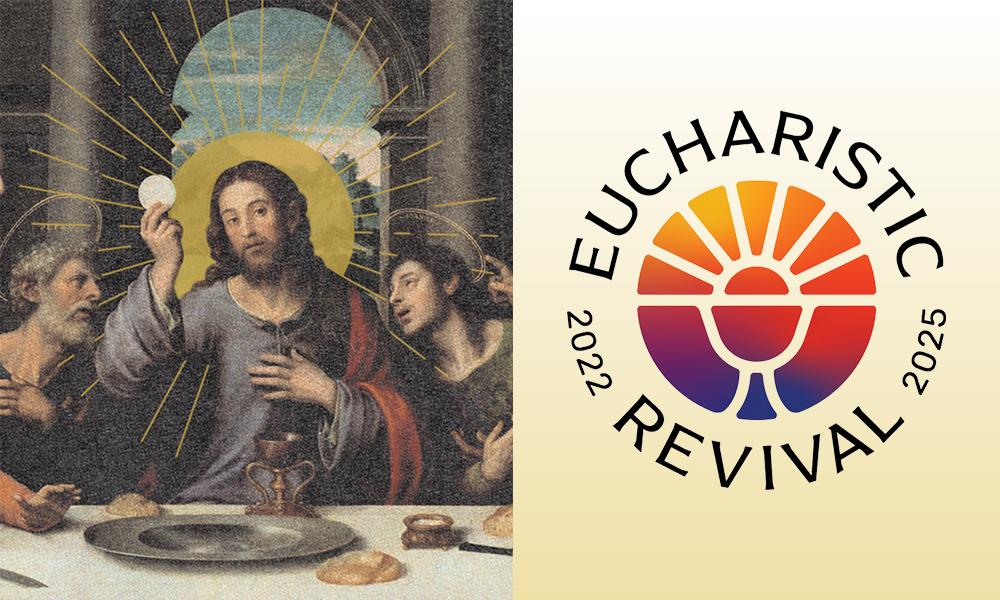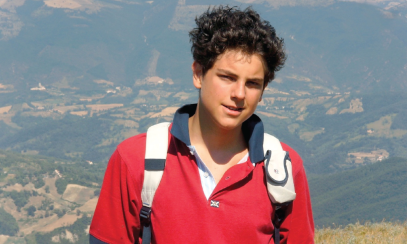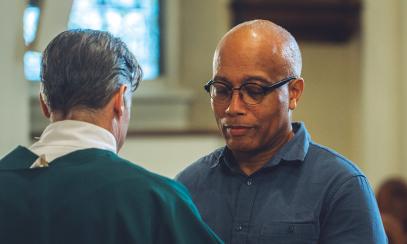
The greatest gift reaches the pews and beyond
“Man should tremble, the world should quake, all Heaven should be deeply moved when the Son of God appears on the altar in the hands of the priest.” — St. Francis of Assisi
“Man should tremble, the world should quake, all Heaven should be deeply moved when the Son of God appears on the altar in the hands of the priest.” — St. Francis of Assisi
As Catholics throughout the nation continue to participate in the Eucharistic Revival, on the feast of Corpus Christi this year, the Year of Parish Revival began. Revival is spurred on through a rekindled relationship with Jesus in the Eucharist, and this year, that invitation is reaching the pews and beyond.
As Catholics throughout the nation continue to participate in the Eucharistic Revival, on the feast of Corpus Christi this year, the Year of Parish Revival began. Revival is spurred on through a rekindled relationship with Jesus in the Eucharist, and this year, that invitation is reaching the pews and beyond.
It has been said that close to 70 percent of Catholics believe the Eucharist is merely a symbol, an encounter with “it” instead of “Who.” This reality, says the United States Conference of Catholic Bishops, “should break our hearts, not because of what it means for Mass attendance or stewardship, but because so many Catholics are missing the opportunity to know Jesus Christ.”
To help others in their relationship with the Lord, the Bishops have identified four pillars which uphold the Eucharistic Revival: reinvigorate worship, create moments of personal encounter, engage in robust formation, and send Catholics forth as missionaries.
The first pillar focuses on renewing the emphasis on the celebration of the liturgy, for the Eucharist makes us capable of seeing and believing in our Resurrected Lord. (cf. Desiderio Desideravi, 7) Encouraging a renewed reverence for liturgical silence, considering daily Mass attendance, attending a catechetical formation series on the Eucharist, going to confession before the celebration of Holy Mass, and sharing a witness story about a powerful experience of the Holy Mass are all ways the faithful can fulfill the first pillar.
Personal encounters with Jesus, most certainly, change us. During this Year of Parish Revival, the faithful are invited to “Come and See” in hopes that they truly encounter the presence of Jesus alive in the Eucharist. Creating prayer teams, inviting others, and participating in a Eucharistic procession or a parish retreat are ways to highlight the second pillar of encounter.
Regarding the next pillar, engaging in robust formation, the bishops explain, “Christ came not only to suffer, die, and rise again for our salvation; He also came to instruct us on how to live, how to pray, and, most importantly, how to love as He loves us.” Continual formation in the Holy Eucharist helps the faithful to “be more effective servants” of the Lord.
The last pillar deals with bringing lapsed brothers and sisters home. “The life of Jesus did not happen years ago,” instruct the Bishops, “it is something that is still happening now. As Christian disciples, we are called to bring this ever-present Life of God into the world.” The faithful can fulfill this pillar by recommitting to a social service and to the poor in the community, inviting someone to a small group, or accompanying someone in deeper discipleship.
As the Year of the Parish continues, it is “through the celebration of the Eucharist, we can be set on fire for the mission our Church needs so desperately,” explained Bishop Andrew Cozzens, chair of the United States Conference of Catholic Bishops’ Committee on Evangelization and Catechesis. “The Eucharist is the greatest gift that Jesus has given us because it contains His very self.”
Making history
The National Eucharistic Congress, the first in 83 years, will be the milestone moment of the Eucharistic Revival. The congress, which will be held in Indianapolis, Indiana, July 16-21, will be a reinstitution of a fruitful tradition not seen in America since the start of World War II. The Diocese of Birmingham is planning a pilgrimage, which includes a comprehensive pass to 10th National Eucharistic Congress, luxury motor coach transport from the Birmingham and Huntsville regions, accommodations at Omni Severin Convention Center Hotel, and a diocesan banquet with Bishop Raica.
For details and registration, scan the QR code below or visit bhmdiocese.org/revival-pilgrimage.bhmdiocese.org/revival-pilgrimage



